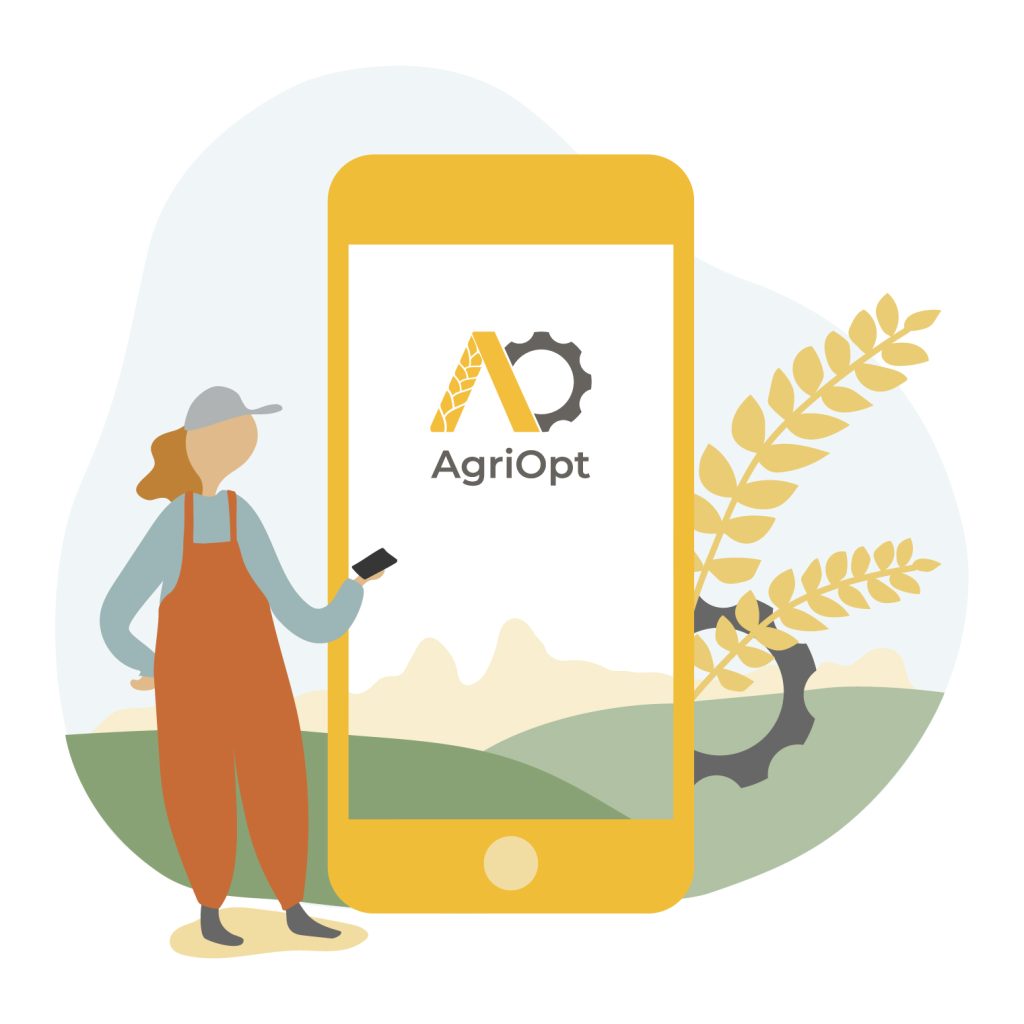What are AI assistants and how to use them
The last Agtech Letter in the series of three considering AI assistants is focused on some of the risks that are related to AI assistants and, maybe more importantly, how to avoid them. Our take is that AI assistants can be very useful tools, but you need to be aware of the drawbacks and pitfalls to use it correctly without violating any regulations or doing any harm to your business.
AI technology has its limitations
The technology that power AI assistants comes with certain risks and drawbacks, and in this Agtech Letterwe high-light some of them and explain why they are problematic, and what you can do about it. We also provide an example to clarify the risks to make it more hands-on. The types of risks we are focusing on here are:
- Spreading of sensitive data (“data leakage”)
- Subjective answers (“biases”)
- In-correct answers (“hallucinations”)
All serious companies that are developing AI assistants are working to reduce the risks of experiencing these drawbacks, but it’s still important for you as a user to be aware of these risks and understand how they can affect you to avoid the pitfalls.
Remember that answers from AI assistants are often provided in a confident and detailed way that makes it easy to trust, even though it might be completely incorrect and or made up.
Sensitive data can leak
In the previous Agtech Letter this risk was mentioned briefly, and it is directly related to how AI models are developed and trained. In this Agtech Letter, we dive a bit deeper to into the problem of leaking data to help you understand this in a better way to avoid it while using AI assistants.
During the training phase, when the AI model is tuned to fit data, the data from prompts and other types of interactions with humans can be used to improve the AI assistant. This process is continuously ongoing to make the AI assistant better at answering questions and performing tasks that the user asks it to, but at the same time there is a risk that your questions and answers in prompts are leaking to other persons using the AI assistants as well. This might become a problem if you have inputted sensitive data such as your or your employees’ personal data, confidential business material, and similar.
Free AI assistants often use your data to improve AI models, but if you pay for the AI assistant this might not be the case. However, you should always be cautious and keep the details of the fine-print in mind before you share sensitive data.
A VERY simplistic example of data leakage
Let’s consider that you are about to invest in a new grain drying system. You use an AI assistant to brainstorm ideas and make some sanity checks for the return-on-investment for the dryer based on the number for you farming operations. Let’s say that you prompt the AI assistant something like
“… at my farm Proud Producers we grow cereals on 1 500 hectares each year, and harvest somewhere between 9 000 to 15 000 metric tonnes each year. Usually we need to dry about 8 000 of these from 18% to 14% water content. Our current dryer is 20 years old and we need to invest in a modern solution for grain drying and storage, and can invest X amount of which Y are loans from our bank. Can you list a few options for me to invest in?…”
Let’s say that you follow up the answer from the AI assistant with a few more questions and then decide to talk to the sellers of some of the options, now armed with detailed description of the investment and its effect on your profitability and operating cash flow.
If this data is used to train the AI assistant, there is a risk that another person that asks a similar question about investing in a grain drying system gets an answer like
“… on the farm Proud Producers they harvest about 10 000 metric of cereals each year on 1 500 hectares, and have similar conditions to your farm. They could invest X, of which Y was a bank loan, and decided to go with the Grain Dryer Efficient which I believe is a good choice also for you…”
And then, your sensitive financial data is out in the open without you knowing about it. This example is of course very simplistic and not very probable, but it highlights what data leakage is and why it could be harmful for you.
You can get biased answers
A problem that the developers working on AI assistants are fighting with every day is bias, meaning that the AI assistant could be leaning in a certain direction in its answers without being objective. One typical example is that the AI assistant has some prejudice inherited from the training data, which is a consequence of our human biases and prejudices that are incorporated into the human-created digital material that has been used to train the AI model. The AI assistants are simply mimicing human behaviors.
How can the training data contain biases and subjectiv information? Well, remember that much of the data comes from scraping the Internet on written material, which includes lots of incorrect material, biased opinions, or prejudice. A lot of the Internet consists of forums and webpages where anyone can make their voice heard without it being fact-checked or corrected if wrong. Hence, when this data is part of the training data, some of this behavior and information is transferred into the AI model and is affecting the answers from the AI assistant.
Once again, a VERY simplistic example of biases
This time, consider an AI assistant that has been trained using data that consists text material from you favorite Internet forum where tractors and machines are discussed freely. If you read the same forums as I, then you probably have noticed the jargon where comments such as “…if you paint the tractor red instead of green…” or “… you have the wrong color of your planter…” are given as answers to questions such as “…why haven’t my winter wheat grown in this spot…” or “…why is the barley yellow at the tip of the leaves…”. The answers and jargon is a clear case of humor and irony which is easily detected by humans, but much harder for AI assistants.
Hence, if you would use an AI assistant that is trained on data including the texts from this forum, you could get similar answers to your serious questions. Let’s say that you ask the AI assistant for a suitable tractor for your farm Proud Producers, it might give a recommendation based on the actual color of the tractor instead of the performance specs or the quality of the dealer network in your area.
This is of course a silly example of how bias can affect the AI assistant, but it shows how bias can sneak in to the answers you get.
You can get a hallucinating AI
The last example of risks related to AI assistants presented in this Agtech Letter is when AI assistants are making things up and starting to hallucinate. When the AI assistant is not sure of the answer, they have a tendency to just start to make things up instead of acknowledging their lack of knowledge. A lot focus and effort is spent by the developers to lower the risks and problems with hallucinations and the AI assistants have become much better over the years, but still it seems to be very difficult to remove hallucinations completely.
One of the reasons why hallucinations exists can be found in the way that AI models work and how they are trained. Once again the AI models are created by using training data to tune parameters to make the model fit the world as good as possible. Hence, when people are expressing opinions and thought in a confident way as if there facts, and without reflecting and taking other points-of-view into consideration also the AI assistant is trained to focus on confidence in the presentation rather than intelligent reflection. Other reasons for hallucinations is that the AI assistants are trained to mimic human-produced text where the focus is spent on how the structure and how things are presented, instead of whether the information is correct or not.
Quite early after the ChatGPT was released in late 2022, it came examples of hallucinations where the AI assistants wrote an article with lots of references to scientific publications. This looked professional and sound, but the problem was that the text was made-up, and none of the referenced material existed but they were made-up by the AI assistants as well. A clear example of a hallucination!
A real example from an AI assistant
To show you how hallucinations can occur we have prompted (that is, chatted) with the free version of ChatGPT. We could have used any assistant but this is arguably the most well-known one and hence we use it here. If you asks questions related to areas within your expertise it is usually quite easy to detect hallucinations and other weird stuff in the answers. However, if you use the AI assistant to get information or doing tasks related to topics that you are not familiar with, it is much more difficult to determine whether the answers are correct or not.
Example: Hallucinating AI assistant
Me:
ChatGPT:
Me:
ChatGPT:
Conclusions from the series on AI assistants
After this series of three Agtech Letters on AI assistants, we can draw some conclusions related to them. On the positive side there is a huge potential benefit of using AI assistants to be more efficient in the daily operations by for example summarizing material such as new regulations, brain-storm ideas, create images and text material to homepages, find information in reports and research publications, and much more.
At the same time there are risks that need to be considered when using AI assistants, and even though the developers try to reduce the negative aspects of AI assistants it is important for you as a user to understand and avoid the risks and pitfalls. Some of the key take-aways from the Agtech Letter are given below.
- Sensitive data – NEVER provide sensitive data such as personal data of confidential material to an AI assistant unless you are sure they are not leaking data.
- Biases and hallucinations – More powerful AI models that you pay for and or specific models aimed at agriculture can be more correct in answering questions related to agriculture. The subscription fee can be well spent money.
- High development speed – the technology development is rapidly evolving and there is a global race to be the best and most efficient large-language-model (LLM). Stay updated on the development and what can be applied to you and your business.
Agtechers' Actions
Don’t be afraid of trying a few AI assistants to understand how they work and hopefully make your life easier. But keep in mind the pitfalls and never trust the answers blindly but rather use it as a tool for brainstorming.
In the next Agtech Letter we will start to scratch the surface on what data is and important things to consider related to data.


